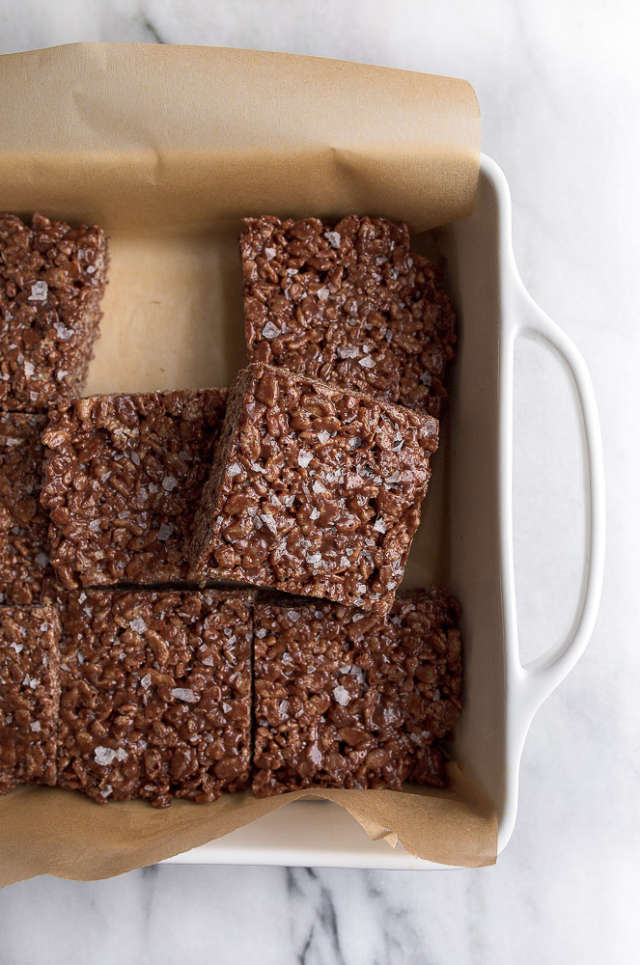This
post was originally published on
this sitehttp://chriskresser.com/

Are you an advocate of the low-carb lifestyle or the ketogenic diet? If you’ve been experiencing problems like fatigue, constipation, or a weight loss plateau, it could be a sign that it’s time to increase your daily carb intake.
In this article, I’ll discuss how to figure out your ideal carb intake—and I’ll talk about when it makes sense to stay low-carb.
Who Should Avoid a Low-Carb Diet?
Carbohydrates and fat are the two primary energy sources for your body. Carbs also fill a variety of important roles in your health and are a great source of antioxidants and micronutrients.
There are also a handful of life stages and health conditions for which low-carbohydrate diets are not recommended. If you fall into one of these categories, I recommend you increase your daily carb intake. Otherwise, you risk harming your health.
Pregnant and Lactating Women
Pregnancy is not the time to experiment with this type of diet. In fact, traditional cultures have long understood the importance of optimal nutrition and carbohydrate intake during the preconception period, pregnancy, and lactation.
Weston A. Price, who traveled the globe in the early 20th century studying the dietary habits of traditional cultures, noted that women in African tribes were strongly encouraged to eat two carbohydrate-rich grains, linga-linga (a botanical relative of quinoa) and red millet, during pregnancy and the nursing period. (1) These people understood, through the transgenerational passing of accumulated wisdom and experience, that carbohydrates were crucial for women during these time periods.
We now understand on a scientific level that carbohydrates are necessary during pregnancy.
They ensure optimal brain growth and development in the fetus. A lack of carbohydrates and overall energy during the preconception period and pregnancy, as observed in the famous studies of children conceived and born during the Dutch Hunger Winter of WWII, reduces the amount of glucose available to the fetus. This ultimately results in smaller infant size and impaired mental health and metabolism later in life. (2, 3)
Furthermore, research has linked a high-protein, low-carbohydrate diet during pregnancy to increased cortisol in offspring. (4) Alarmingly, following a ketogenic diet during pregnancy also reduces the size of the child’s critical brain regions and has other effects on their brain’s structure. (5) The long-term health implications of these changes remain largely unknown, but it is reasonable to say that low-carb diets are best avoided during pregnancy.
The harmful effects of low-carb diets on infants are not limited to preconception and pregnancy; a low-carb diet during lactation may alter milk production and composition and reduce infant growth. (6)
Based on this evidence, pregnant and lactating women should aim for a moderate carbohydrate intake, which I define as approximately 30 percent of your total calories.
For more information about the complex role that carbohydrates play in pregnancy, check out my article “Do Low-Carb Diets During Pregnancy Increase the Risk of Birth Defects?”
Children
Low-carb diets are not recommended for children. Sometimes, children with gut issues such as small intestinal bacterial overgrowth (SIBO) or irritable bowel syndrome (IBS), or neurobehavioral disorders such as autism or ADHD, are put on reduced-carbohydrate diets by their well-intentioned parents to control gut dysbiosis or manage blood sugar. This is problematic. Carbohydrates are required to fuel weight gain and brain development in growing children. They’re part of the healthy diet kids need to thrive.
While adults can thrive on low-carb diets that strictly limit calories from carbs because they are no longer growing, kids can’t.
In fact, children who have to rely on dietary protein and fat for energy often don’t grow or function as well as their counterparts. They may even overproduce toxic by-products of protein catabolism, such as urea and ammonia.
If your child is struggling with gut or attention issues, focus on balancing his or her blood sugar with a diet that includes complex carbohydrates, healthy fats, and protein, along with interventions that correct dysbiosis and optimize brain function. Don’t cut out carbohydrates.
Athletes
When we eat foods containing glucose, some of that glucose is used to build a branched polysaccharide called glycogen. The liver and skeletal muscle are the primary sites of glycogen synthesis in the body. Along with fat, glycogen serves as an important energy substrate during exercise.
The cyclical depletion and repletion of muscle glycogen that occurs in athletes often requires a high carb intake to sustain. In many athletes, carbohydrate intake has a direct impact on their ability to perform well in their chosen sport. (7, 8) However, the amount of carbs athletes need each day depends on several factors, including:
- Sex
- Degree of metabolic flexibility
- The type of physical activity being performed
Do All Athletes Need to Eat High-Carb Diets?
For decades, the prevailing dogma in sports nutrition has been that endurance athletes need to eat large amounts of carbohydrates to continually replenish their glycogen stores. However, new research indicates that ketones, organic molecules produced by the liver when it breaks down fat for energy, are ideal fuel sources for the low-intensity, long-range exertion of endurance sports. (9, 10, 11)
This new research—and the experiences of a growing number of athletes who are crushing it on ketogenic diets—suggests that low-carb diets may be safe and effective for endurance athletes.
However, the caveat is that most of the research on ketogenic diets in endurance athletes has been performed on men—women are sorely underrepresented. This means that we can’t necessarily conclude that female endurance athletes will respond favorably to this type of diet. Endurance exercise frequently disrupts the delicate hormonal balance in female athletes; a low-carb diet may further stress the endocrine system and contribute to the “female athlete triad,” a constellation of symptoms like:
- Insufficient calorie intake
- Amenorrhea
- Osteoporosis
And, while endurance athletes may thrive on a low-carb diet, activities that involve explosive movements, such as martial arts and CrossFit, are highly glycolytic and usually require a higher carbohydrate intake.
The takeaway here is that every athlete’s carbohydrate needs are unique.
If you’ve been on a low-carb diet for months and are struggling in your workouts, it may be time to increase your daily carb intake. Even going from a low-carb to a moderate-carb diet can produce significant gains in strength and endurance.
For reference, the low end of carb intake for athletes is approximately 20 percent of total calorie intake, whereas the high end is 30 to 40 percent of total calorie intake. Athletes need to experiment to find their carbohydrate intake “sweet spot” that fuels their chosen sports while also supporting the health of their minds and bodies over the long-term.
People with Hypothyroidism
The amount of carbs you eat each day has a significant effect on thyroid function. Insulin, which is needed for the conversion of inactive T4 to active T3 hormone, is secreted by the pancreas in response to ingested carbohydrates. Insulin levels are generally low on low-carb diets. If you’ve been eating low-carb for a while and are struggling with hypothyroid symptoms like cold hands and feet, thinning hair, constipation, and fatigue, you may want to consider increasing your daily carb intake.
Those with HPA Axis Dysregulation
The hypothalamic–pituitary–adrenal (HPA) axis is the body’s central stress response system. HPA axis dysregulation is triggered by chronic stress that erodes the body’s resilience and metabolic reserve. It leads to changes in the output of hormones and neurotransmitters such as:
- Cortisol
- DHEA
- Melatonin
- Epinephrine
High cortisol is a common problem for people with HPA axis dysregulation, and low-carb diets may exacerbate the problem because they increase cortisol. (12) Slightly increasing your carbohydrate intake may be a helpful adjunct treatment in a comprehensive plan designed to correct HPA axis dysfunction.
How to Figure Out Your Ideal Daily Carb Intake
There is no one-size-fits-all approach to carbohydrate intake. In The Paleo Cure, I broke down different carb intakes by percent of total calories and grams per day and included indications for each level of intake.
|
Carb intake as a percentage of total calories |
Carb intake for men in grams based on a 2,600-kcal diet |
Carb intake for women in grams based on a 2,000-kcal diet |
Consider this diet if you: |
| Very low carb |
<10% |
<65 g |
<50 g |
Have neurological issues (like epilepsy or Alzheimer’s disease or severe blood sugar problems) |
| Low carb |
10–15% |
65–100 g |
50–75 g |
Are trying to lose weight, regulate blood sugar, correct mood disturbances, or fix digestive problems |
| Moderate carb |
15–30% |
100–200 g |
75–150 g |
Are generally healthy and want to maintain your current weight, or you are suffering from HPA axis dysregulation, hypothyroidism, or familial hypercholesterolemia |
| High carb |
>30% |
>200 g |
>150 g |
Are an athlete or highly active person, are trying to gain weight or muscle mass, have a fast metabolism, or are pregnant or breastfeeding |
Take a look at this chart and get a feel for which category best fits your needs. Once you have selected a category, use the three-step process below to determine your ideal daily carb intake.
1. Consider Your Current Health Status
It is important to consider your current state of health when figuring out your optimal carbohydrate intake. For example, someone who is pre-diabetic or diabetic is likely to reap more benefit from a low-carb diet than an athlete with well-controlled blood sugar.
Another important aspect of your health to consider is your digestion. Does eating carbs give you gas, bloating, diarrhea, or constipation? If so, limiting your intake, even for a short period of time while you pursue treatment, may be useful. If you struggle with HPA axis dysregulation, are a woman looking to optimize your fertility, or are pregnant or breastfeeding, then you should aim for a moderate carbohydrate intake.
2. Determine Your Daily Calorie Needs and Calculate Your Ideal Carb Intake
The first step here is to determine your daily calorie needs. You can use a tool such as this BMR calculator from Many Tools. Once you have a value for your calorie needs, you can experiment with different ratios of carbs in your diet.
For example, if your daily energy needs are 2,000 calories and you’d like to aim for a moderate carb intake (30 percent of total calories), multiply 2,000 by 0.30. This comes out to 600 calories from carbs per day. Next, with the understanding that there are 4 calories in a gram of carbohydrates, divide 600 by 4 to get 150 grams; this is the number of grams of carbs you should eat per day.
3. Track Your Daily Carb Intake
Use an app, such as MealLogger or Eat This Much, to help you track how many carbs you eat in a day. Document how you feel either in an app or food journal.
One of the benefits of using Eat This Much is that the app can adjust your macronutrient percentages and automatically generate meal plans for you that fit within those parameters. This makes it easy to experiment with different carb intakes, track your results, and change course if needed.
When a Low-Carb Diet Is a Good Idea
While it makes sense for some people to eat more carbs, they can be problematic for others. Low-carb diets can help people with:
If you have one of these health issues, eating more carbs may not be the right choice for you.
You Are Overweight or Obese
A growing body of research indicates that low-carbohydrate diets are useful for promoting weight loss. (13, 14) Eating low-carb encourages weight loss by spontaneously reducing calorie intake, stabilizing blood sugar, and boosting insulin sensitivity. These diets also tend to be higher in protein, which has satiating effects and decreases your appetite and food intake.
You Have Blood Sugar Imbalances
Blood sugar imbalances have several harmful effects on the body. Elevated blood sugar promotes chronic inflammation, which is a risk factor for many chronic diseases, including:
Diets high in refined carbohydrates promote chronically elevated blood sugar, which may eventually morph into insulin resistance or diabetes. A high refined carbohydrate intake can also provoke reactive hypoglycemia, a condition in which blood sugar drops too low following a meal, resulting in anxiety, dizziness, shakiness, hunger, and brain fog.
If you are prone to high blood sugar or blood sugar fluctuations, you may want to eat fewer carbs in a day. That will help stabilize your levels and prevent the symptoms associated with the blood sugar “roller coaster.”
You Have a Neurological Disorder
Research indicates that blood sugar dysregulation plays an important role in neurological disorders, including Alzheimer’s disease, Parkinson’s disease, and ALS. In fact, Alzheimer’s, Parkinson’s, ALS, and dementia all respond favorably to a ketogenic diet. Ketogenic diets are very low in carbohydrates and cause the body to rely on ketone bodies rather than glucose for energy. (15, 16, 17)
You Suffer from a Mood Disorder
Blood sugar regulation is closely tied to mood and mental health. Research has found that a high sugar intake and poor glycemic control (i.e., blood sugar swings) negatively impact mood and psychological health. (18, 19) Interestingly, the ketogenic diet has demonstrated effects similar to antidepressant drugs, suggesting that following this type of lifestyle may benefit people with mood disorders. (20) However, some people experience increased anxiety on a low-carb diet, so ultimately, you’ll need to experiment to determine what best supports your mental health.
You Have PCOS
Between 5 and 10 percent of women of childbearing age in the United States have PCOS, making it one of the most common hormonal disorders in women. Adopting a low-carb diet can be a beneficial approach to PCOS because it alleviates the hallmark symptoms of the disease. It promotes weight loss, reduces free testosterone and the LH/FSH ratio, and decreases fasting insulin. (21, 22)
You Have a Digestive Disorder
People with SIBO and GERD often find that carbohydrates exacerbate their digestive problems. A restricted intake of fermentable carbohydrates, particularly FODMAPs (fermentable oligosaccharides, disaccharides, monosaccharides, and polyols), can work wonders to reduce symptoms of GI distress. However, some people with SIBO and GERD do fine with moderate amounts of starches like white rice and plantains. If you have SIBO or GERD, self-experimentation can help you determine if low-carb works for you.
You Have Cancer
Some (but not all) research suggests that low-carbohydrate diets may be beneficial in the treatment of certain cancers. Cancer cells require glucose for fuel. The theory is that by reducing glucose intake, it may be possible to “starve” cancer cells and inhibit their survival and proliferation. (23) While not all cancers respond, low-carb diets have demonstrated good results in brain, prostate, and colon cancers. (24, 25, 26)
Now, I’d like to hear from you. Do you follow the low-carb lifestyle? What’s your daily carb intake? Are you thinking of switching to a moderate- or high-carb diet? Let me know below in the comment section!
The post Do You Need to Increase Your Daily Carb Intake? appeared first on Chris Kresser.







 Despite its common association with hardcore bodybuilding, the deadlift is a genuine full-body exercise that (done correctly) can support even a beginning strength training program. Lifting, as many of you know, is one of
Despite its common association with hardcore bodybuilding, the deadlift is a genuine full-body exercise that (done correctly) can support even a beginning strength training program. Lifting, as many of you know, is one of 



 For now classes are 6pm and 640pm at 2840 Wildwood st in the Boise Cloggers studio.
Book your class NOW!
click this ==>
For now classes are 6pm and 640pm at 2840 Wildwood st in the Boise Cloggers studio.
Book your class NOW!
click this ==>








